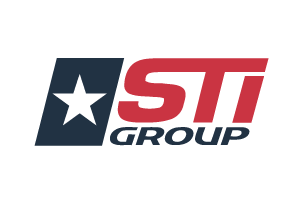Industrial scrubbers provide crucial pollution control for industrial facilities. There are a wide array of different industrial scrubbers that are optimized for different purposes and which fill slightly different roles in the industrial world. Understanding industrial scrubbers is key to selecting the most efficient, cost effective scrubber for a given application. Let’s take a look at what industrial scrubbers are, the roles they fill, and the types that exist.
What are Industrial Scrubbers?
Industrial scrubbers are a pollution control device. They are used to purify exhaust streams, ensuring that few if any harmful particulates and gases get through. For example, when industrial scrubbers were first designed they were meant to remove carbon dioxide from the air of submarines. However, nowadays they are found in a wide array of industrial and commercial settings.
There are a few different types of scrubbers, and three main modes of contaminant removal. First there are scrubbers that use liquid to wash harmful pollutants from gas streams. This is the more traditional scrubber type. Second there are scrubbers that use a dry substance to get acid gases out of exhaust streams. Finally, there are scrubbers that use an absorbing agent to remove toxic substances.
What is the Role of Industrial Scrubbers?
In general, industrial scrubbers are used to remove toxic substances from exhaust gas. They tend to do this by neutralizing the toxic substance or washing it away. While that is their primary role, they also perform a few other functions including the following:
- Atmosphere Cleaning – Stationary or enclosed scrubber models can be used to treat exhaust gases before they are released into the atmosphere. These models are normally housed in their own building or enclosure, and as the name suggests are stationary.
- Local Cleansing – Portable scrubbers are smaller units that can be moved from place to place, sometimes on wheels, and are used to clean local, small areas.
- Fume Abatement – There are trailer or truck scrubbers that get mounted on trailers or trucks. They then become mobile dust and/or fume abatement.
Because scrubbers can be used in different ways, the way they fulfill their role varies.
Types of Industrial Scrubbers and Their Roles
There are many different types of industrial scrubbers. Some of the most common wet types include the following:
- Spray Tower – The exhaust streams are fed into the spray tower. In this chamber there are nozzles that spray the gas. You can choose the liquid particle size that will fit your needs best.
- Cyclone Spray Chamber – This type of scrubber combines the spray technology with a cyclone, or moving air. This allows a smaller particle size to be used because the cyclonic motions make the particles smaller. This type of scrubber is more efficient than the spray tower, but requires more power.
- Venturi – The gas stream is forced through the venturi shaped chamber. At the throat, water is injected at low pressures. When it mixes with the quickly moving gas stream it atomizes, which allows the pollutants to be captured. This type of scrubber requires pressure drops and therefore a lot of energy.
- Orifice – This is similar to venture simply because gas quickly moves through a narrow section. However, this time the gas moves through pools of the scrubbing liquid. This type of scrubber has low water recirculation, so they don’t require quite as much energy or liquid.
- Impingement – This is a variation of orifice that uses a perforated tray that contains the cleaning liquid.
These are a few of the more popular types of liquid scrubbers. However, not only are there different types of scrubbers available, but the scrubbers can also be used at different orientations, which also affects how the scrubbers work:
- Horizontal – In this orientation the liquid and gas flow perpendicular to each other. This raises the flow rate, which means the unit can be smaller, but it also tends to be less efficient.
- Co-Current – In this orientation the liquid and gas flow in the same direction. This allows higher flow rate, which reduces the size of the unit, but is also less efficient.
- Vertical – In this orientation, liquid and gas flow in opposite directions. This is the most efficient orientation even though it reduces the flow rates.
STI Group Provides Quality Industrial Scrubber Services
The benefit of having so many different types of industrial scrubbers available is that it means there will be a scrubber best suited for each client’s particular needs and priorities. STI Group provide industry-leading industrial services including installing and servicing scrubbers. Please contact us to discuss your needs so that we can help you select the ideal scrubber for your facility.

